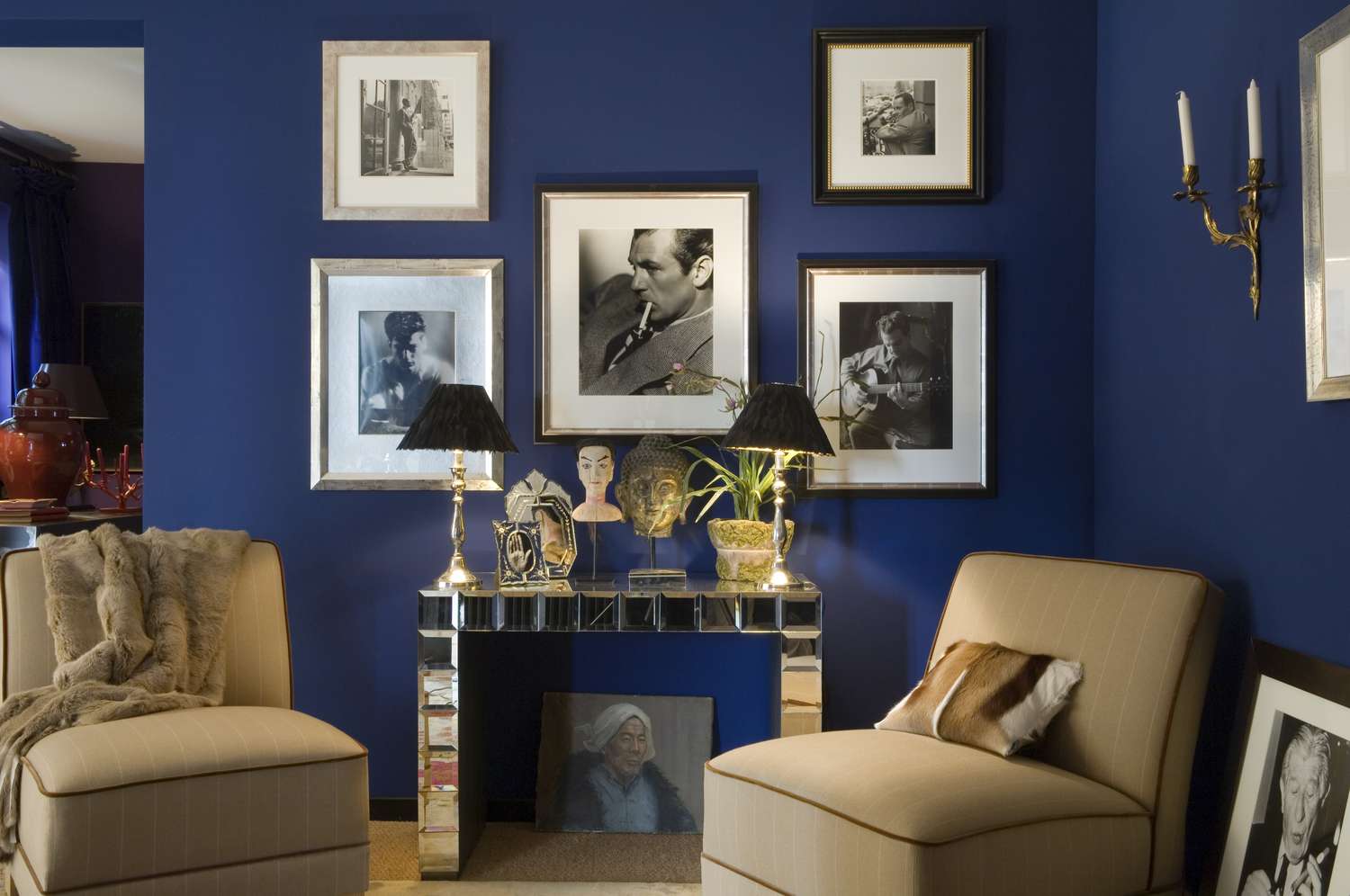White and pastel tones have long been valued when it comes to making rooms feel open and airy. On the other end of the spectrum, darker, more dramatic hues often shrink a room, making it feel small. This isn't always a bad thing – sometimes it can create a more grounded, defined atmosphere – but often it can make a room feel moody and cramped.
This dilemma is particularly evident in the living room, an area where most guests want to feel open, spacious and inviting. We spoke to interior designers about the six colors that will make your living room feel small—and which you may want to use sparingly, depending on your scenario.
Olive green
Little Greene
Green is the new gray, says Kristin Kurko, head of interior design firm Rocco Revolution. However, in contrast to the cold, sterile gray, green gives a room an organic, grounded quality that makes it feel more inviting and calm. “Olive green in particular connects the interior with nature and creates a calming, restful atmosphere,” she says.
Green can help create a sense of unity. However, balance is important, and too much or too much shade can quickly create a claustrophobic feeling in the room. Kurko recommends soft, muted hues like sage or olive for a calming effect – a bolder emerald adds a touch of drama.
lavender
Purple is a color with a split personality – in the best sense. Depending on how it is used, it can evoke a sense of calm or increase drama in a room.
Lavender is a tricky color because it makes a room feel cozier but also less spacious. “The overall coziness depends on how you design the rest of the room,” says Kurko. Combine it with soft textures and wool rugs to feel comfortable in tight spaces, or add modern elements to create something fresher and more sophisticated.
Navy blue
Getty / nicolamargaret
Deep navy blue is a standout choice when it comes to adding a sense of texture and focus to a living room. “It has the unique ability to transform a large, impersonal space into one that feels elegant and cohesive,” says architect and interior designer Daniel Joseph Chenin.
However, with the wrong accessories, navy can look oppressive and intrusive, creating a cramped atmosphere. If you like the color, pair it with warmer, cozier layers instead. Try incorporating jewel-toned velvet upholstery and natural wood details like oak shelves to add warmth and balance the color's cool undertones. You can also layer accessories like woven throw blankets, patterned rugs, or pillows with subtle textures.
Burgundy
Burgundy may sound like a bold choice for a living room—and it is—but that can be part of its charm. This deep, rich hue adds instant drama and warmth, but can also easily take over if you're not careful.
“To keep it from looking too intense, balance it with lots of natural light and brighter accents,” says interior designer Kellie Richardson, principal of Kurved by Design. Think light-colored furniture, light-colored textiles, or even sheer curtains, all of which will help soften the look.
Dark gray
Gray can be a great choice for changing the atmosphere of a living room – but it does require some consideration. First, it absorbs light, which can make a room feel more enclosed and less open.
To avoid a cold, claustrophobic atmosphere, Richardson recommends combining gray walls with lots of natural light and warm accents like wooden furniture or gold decor. On the bright side, as a versatile neutral, gray goes well with almost any style and color, making it easy to mix and match design elements.
Chocolate brown
Courtesy of Sherwin-Williams
Deep browns, especially rich chocolate browns, can give your room a dense, earthy feel. However, according to Richardson, this color also makes the ceiling appear lower.
To keep the room from feeling “too dark and cramped,” Richardson recommends lots of light. “Whether it's natural light or well-placed lamps, this way you get a calming effect without sacrificing openness,” she says.
